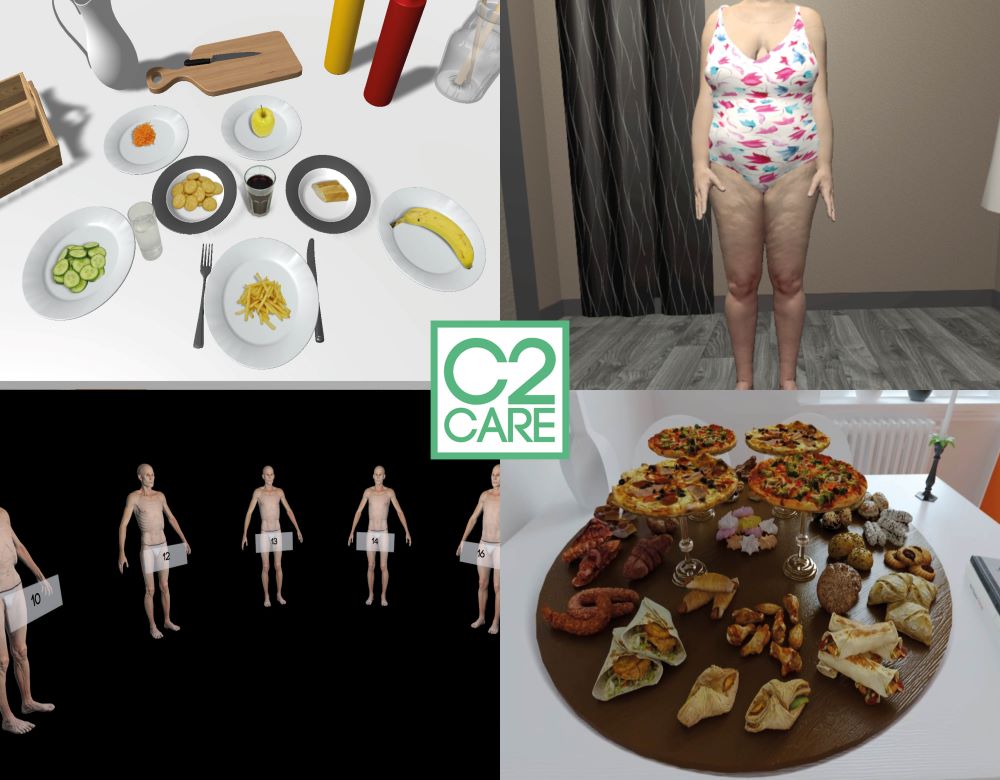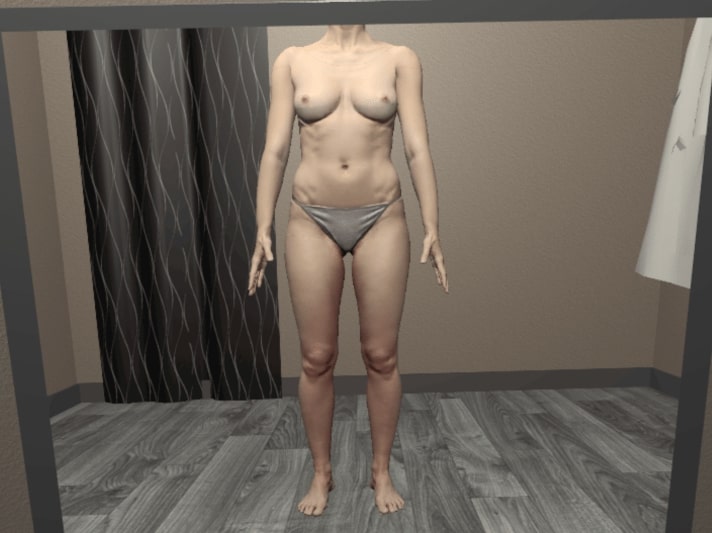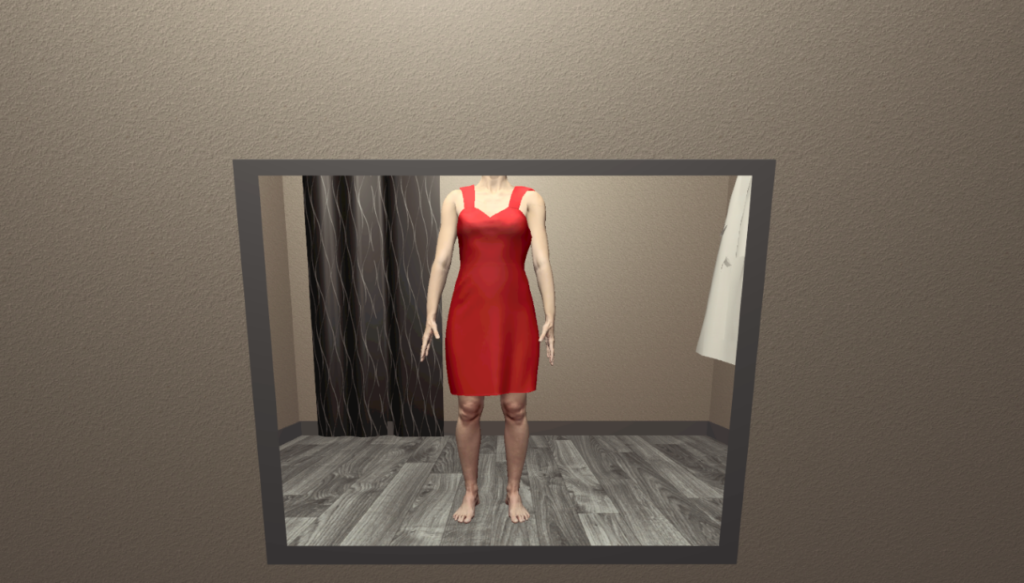VIRTUAL REALITY TO OVERCOME EATING DISORDERS
For more than 30 years, virtual reality exposure therapies have proven their effectiveness in the support and management of patients with eating disorders. Gradual and progressive exposure to virtual reality allows you to accept and regulate your excessive consumption, and to free yourself from your false beliefs about food.
« Virtual reality is 80% effective, with benefits that are maintained for more than a year after treatment. » Eric Malbos, Doctor Psychiatrist
C2Care, the world leader in therapeutic virtual reality (VR) since 2015, now allows you to expose yourself from your home. A psychologist will accompany you in your treatment using cognitive behavioural therapies (CBT) and virtual reality exposure to overcome your disorder.

More than 1000 patients already treated, be next!
VIRTUAL REALITY ADAPTS TO YOUR DISORDER

DYSMORPHOBIA
In eating disorders, body image is often severely affected and the perception of the body schema is distorted.
The environments allow us to work on this perception and to gradually recover a more realistic and less distressing perception of the body.
EXPOSITION
In the majority of eating disorders, food is at the heart of the problem. It is either a source of great anxiety or a source of irresistible attraction. Both aspects can be worked on through exposure.
Through several environments covering many types of food (sweets, fast food, chocolates…), you can work on these difficult emotions and overcome them.


COMPOSITION OF MEALS
With the help of your therapist, dietician or nutritionist, compose e-meals with immediate feedback on nutritional values to increase your nutritional knowledge and help you reintroduce forbidden foods. This application is aimed at a wide range of disorders: people suffering from obesity or anorexia, bulimics, compulsive snackers, diabetics…
HOW DOES IT WORK?
1. I get my headset
You will need to equiped yourself with a compatible virtual reality headset. You will then have an unlimited access to our software : C2Phobia, C2Drive, C2Hypno, C2Brain, C2Custom, and C2Motion.
2. I carry out my sessions
If you are followed by a therapist, you will discuss together your anxiety disorder, in order to understand it and to give you the necessary tools to reduce it. You will be exposed to virtual reality in a progressive manner adapted to your needs.
3. I use my headset autonomously
You will be able to repeat as many times as necessary the exposure to the different situations in order to create a habituation and thus reduce the anxiety related to them.
TESTIMONIALS
Each person tells in their own words about the support they have received and the major changes that have taken place in their lives. All these testimonies are proof that yes, one’s life can change, and that we are doing everything we can to guide you on the path to that change.

